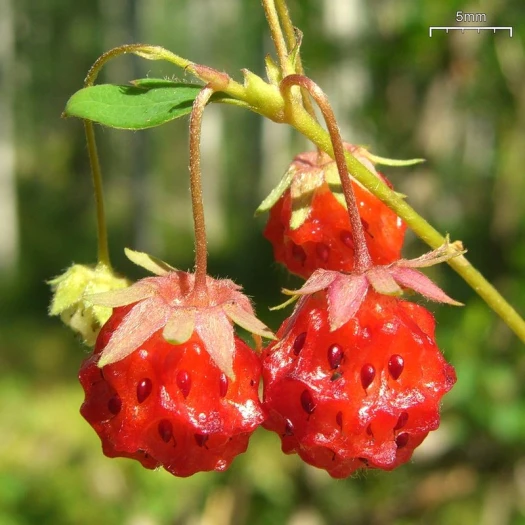Virginia Strawberry
(Fragaria virginiana)
Virginia Strawberry (Fragaria virginiana)
/
/

Jason Hollinger
CC BY 2.0
Image By:
Jason Hollinger
Recorded By:
Copyright:
CC BY 2.0
Copyright Notice:
Photo by: Jason Hollinger | License Type: CC BY 2.0 | License URL: https://creativecommons.org/licenses/by-sa/2.0/ | Uploader: pellaea | Publisher: Flickr |





































































Estimated Native Range
Climate Requirements for North Bethesda, Maryland
| This Plant | Your Site | Plant Suitability for Your Location | ||
|---|---|---|---|---|
| • Precipitation | 25" - 30" | 42" | Aquatic | Aquatic |
| • High Temp. | 69°F - 85°F | 88°F | Your summer temperatures are normal for this plant. | Excellent |
| • Low Temp. | -7°F - 23°F | 24°F | Your winter temperatures are normal for this plant | Excellent |
This plant may not grow well at your location - your precipitation is too high.
Summary
Fragaria virginiana, commonly known as Virginia Strawberry, is a perennial herb native to open woodlands, grassy slopes, and the edges of forests across much of the United States, southern Canada, and parts of Northern Mexico. It is one of the two species of wild strawberry that were hybridized to create the modern domesticated garden strawberry (Fragaria × ananassa). Virginia Strawberry typically grows up to 4 inches (100 mm) tall and spreads to form a ground cover. The plant features trifoliate leaves and five-petaled white flowers with a golden center, blooming from April to June. The flowers are modest in size but can be quite showy when in mass bloom. The fruit is a small, red berry that is more flavorful than the larger garden strawberry, though less commonly harvested due to its size.
Virginia Strawberry is valued for its edible fruit, ground-covering ability, and wildlife support. It is often used in naturalistic plantings, as an underplanting in orchards, or in home gardens for its ornamental and culinary appeal. The plant prefers full sun to part shade and adapts to a range of soil types, provided they are well-drained. While it requires medium amounts of water, it is relatively drought-tolerant once established. Gardeners should note that the runners can be aggressive, and the plant may require management to keep it within bounds. Additionally, it is resistant to many common diseases that affect garden strawberries.CC BY-SA 4.0
Virginia Strawberry is valued for its edible fruit, ground-covering ability, and wildlife support. It is often used in naturalistic plantings, as an underplanting in orchards, or in home gardens for its ornamental and culinary appeal. The plant prefers full sun to part shade and adapts to a range of soil types, provided they are well-drained. While it requires medium amounts of water, it is relatively drought-tolerant once established. Gardeners should note that the runners can be aggressive, and the plant may require management to keep it within bounds. Additionally, it is resistant to many common diseases that affect garden strawberries.CC BY-SA 4.0
Plant Description
- Plant Type: Herb
- Height: 0.3-0.8 feet
- Width: 1-2 feet
- Growth Rate: Moderate
- Flower Color: White
- Flowering Season: Spring, Summer
- Leaf Retention: Deciduous, Evergreen
Growth Requirements
- Sun: Full Sun, Part Shade
- Water: Medium
- Drainage: Fast, Medium, Slow
Common Uses
Bee Garden, Bird Garden, Butterfly Garden, Deer Resistant, Drought Tolerant, Edible*Disclaimer: Easyscape's listed plant edibility is for informational use. Always verify the safety and proper identification of any plant before consumption., Erosion Control, Fragrant, Groundcover, Street Planting
Natural Habitat
Native to open woodlands, grassy slopes, and forest edges
Other Names
Common Names: Thickleaved Wild Strawberry , Mountain Strawberry
Scientific Names: Fragaria virginiana
GBIF Accepted Name: Fragaria virginiana Duchesne